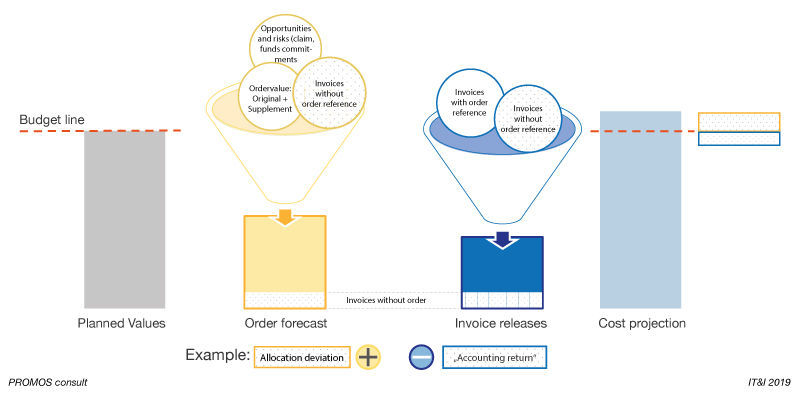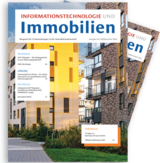How LBBW Immobilien ensures planning security with cost monitoring in SAP®

The bigger the construction project, the more complicated it becomes to harmonise quality, time and costs. Many construction phases must be coordinated, and various companies share responsibility for one or several subsections. Disruptions in the building process or interruptions can lead to bottlenecks that are detrimental for the adherence to the budget and schedule. The LBBW Immobilien Group knows the pitfalls of construction controlling. The fully-owned subsidiary functions as a real estate competence centre within the Landesbank Baden-Württemberg (LBBW) company group. In addition to the pillars of asset management and municipal development, it oversees the development and building of residential and commercial property. The Group has planned and built a wide variety of real estate projects over the past 80 years. Either alone or with partners, the LBBW Immobilien Group serves as both an investor and service provider and is currently responsible for some 15 active projects with a total investment volume of €30–160 million[1]. Conscientious project management is therefore necessary to ensure cost security.
Always up to date
Cost monitoring is an indispensable instrument for this. Yet without the right tool, keeping track of the status of the required budget at all times can quickly grow into a herculean task for any contractor. The degree of detail in the information increases as the project progresses, and external influences can change the initially calculated budget. For support in cost monitoring and projections, LBBW Immobilien Group relies on the PROMOS.GT project cockpit. Together with PROMOS, the company has developed a clever supplement to the SAP® standard system that takes the entire dynamic and numerous uncertainties of the construction process into account.
The idea was conceived in the summer of 2015. This was when the team led by Daniel Schilling, Corporate Development at LBBW Immobilien Group, posed a question: Why should cost controlling and monitoring be conducted across numerous systems in such a cumbersome, redundant and error-prone manner when approved and released budgets, assigned contracts and current costs are already available in SAP®? Following their approval, investment projects at the LBBW Immobilien Group are created in SAP®. It is there that accounting, order entry and the recording of payments take place.
Having formulated all manner of demands for the new tool, the company looked to its consulting partner PROMOS. Everyone involved quickly agreed that an expansion of the existing project cockpit would be a comfortable solution. The project cockpit collects all actual data on a project such as the release budget, orders (resource commitment) or payments, building a common data basis with its specific structure. The new cockpit for cost monitoring automatically uses the current data, and the project leader can add further information on the project, such as claims for other expected values. This allows the budgets at the level of the project, the DIN cost group and the trades to be compared with a cost projection, which enables a prognosis of the anticipated final accounting costs at the project level.
The tools already used by construction managers served as a systematic example. “It was important to us from the start that the look and feel of the cost monitoring be based on the familiar application from other systems or Excel. For this reason, we asked users what they wanted and discussed their wishes in multiple workshops”, said Daniel Schilling of the method that significantly contributed to the success “Involving the employees in the conceptional design at an early stage was the right decision. In this way, we were able to build trust in the new solution and increase acceptance”, said Schilling.
Daniel Schilling, Corporate Development at the LBBW Immobilien Group
Another customer requirement was the implementation of a separate authorisation concept for the new cockpit. “Absolute confidentiality is a fundamental prerequisite for realistic cost monitoring”, Schilling stated. Instead of authorisation granted at the company code level, members of the project teams only receive access to their respective project.
Keeping risks in view through innovation
Supplements are common in practise and are among the challenges in development. Take, for example, the elimination of a dead zone in the underground garage of a property owned by the LBBW Immobilien Group. When the fire department was only partially able to give the all-clear for the building during preliminary acceptance due a radio dead zone that hindered communication, additional building technology needed to be installed and an expert hired. Such cost changes are always connected to reasons, allowing them to be transparently represented in the tool. For this purpose, claims or provisions can be created with ease. A selection catalogue simplifies data input, and descriptions for the project team can be recorded in text fields. In addition to documenting all changes, this also has an immediate impact on the cost projection, which represents a major advantage of the cost monitoring system.

Figure 1: The cost projection takes all of the project’s determining financial factors into account.
 Figure 1: The cost projection takes all of the project’s determining financial factors into account. |
During calculation of the cost projection, all of a construction project’s determining financial factors are taken into account. It is calculated from the planning values along with the allocation and accounting deviations (Figure 1). The values are comprised in detail as follows: The order forecast is used as the basis for calculating the two deviation values. The order forecast represents the sum of all order values as well as claims and committed funds, and therefore contains both the values assigned in the actual commissioning as well as information on potential additional or reduced costs. The allocation deviation is calculated by correlating the order forecast with the planning values. Only after technical completion does the allocation return flow into the cost projection. Furthermore, the order forecast is then compared with the invoice releases, which then allows the accounting deviation to be determined. The accounting return is then only shown once the PO item has been finally calculated. This means that not only monetary values but also master data values (which are already maintained) are determining factors in the cost projection.
Budget overruns and underruns are then displayed next to the cost projection in a separate column in the cockpit and shown both in absolute terms and as a percentage. This allows the LBBW Immobilien Group’s construction managers to quickly record deviations.
You can only steer if you know where you are and where you are going
Continual monitoring of whether actual costs are developing in the expected scope achieves significant savings. This allows for goal-oriented measures and the effective controlling of deviations. Daniel Schilling is satisfied with the results. “The goal was to develop a simple SAP® application that mirrored the look and feel of familiar systems and ensured the continuous use of data. And that is what we got. Since all data is quickly available in SAP®, projections are possible in every phase even if, for example, advance sales and rentals take place before construction starts.” Reporting is also conducted with the help of the cockpit, and there are plans to expand this to include monthly reporting in the future. All in all, the cost monitoring system, including regular evaluations, should guarantee accurate project planning.
- As at September 2018
Author:

Ingo Zander
Director Consulting Facility & Construction Management
PROMOS consult


